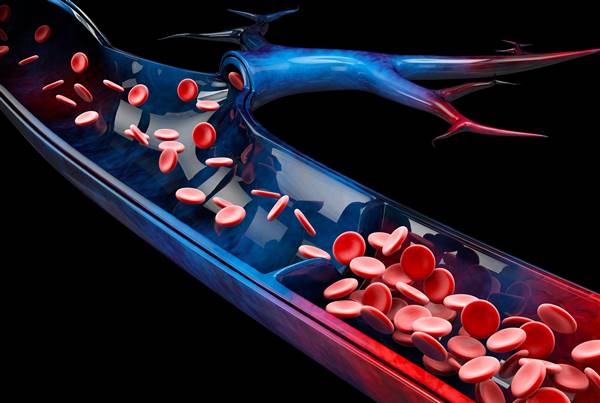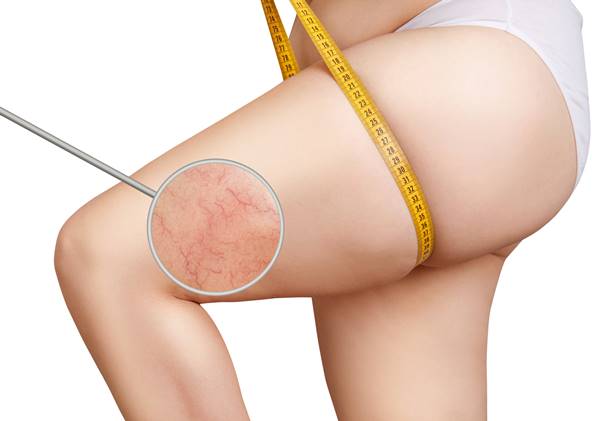Varicose veins are swollen, twisted veins that usually appear in the legs. These veins are caused by a malfunction of the valves within the vein which results in blood pooling and causing the vein to become enlarged. Varicose veins can be painful and uncomfortable, causing symptoms such as heaviness or achiness in the legs, swelling, itching, and throbbing sensations. They can also be unsightly and affect a person’s self-confidence.

While anyone can develop varicose veins, certain factors such as age, genetics, being overweight or obese, pregnancy, standing or sitting for long periods of time, and a sedentary lifestyle increase the risk of developing them. Treatment options include lifestyle changes such as exercise and weight loss as well as medical procedures such as sclerotherapy or laser therapy.
Risk Factors For Varicose Veins
Risk factors for varicose veins are numerous and can include genetic predisposition, age, pregnancy, obesity, and a sedentary lifestyle.
Genetics plays a significant role in the development of varicose veins as the condition tends to run in families.
The risk of developing varicose veins increases with age as vein walls become weaker and less flexible over time.
Pregnancy puts pressure on the legs and pelvic region, leading to increased blood flow and stretching of vein walls.
Obesity increases the workload on leg veins, making them work harder to pump blood back to the heart.
A sedentary lifestyle can also contribute to varicose veins as sitting or standing for long periods reduces circulation and increases pressure in leg veins.
Genetics And Varicose Veins
Genetics plays a significant role in the development of varicose veins. If a close family member, such as a parent or sibling, has varicose veins, there is a higher likelihood that you may develop them as well. In fact, studies have shown that genetics account for up to 80% of cases.
The genetic link is due to the weakening of the vein walls and valves, which can be inherited. This results in poor circulation and blood pooling in the legs, leading to enlarged and twisted veins.
While genetics cannot be changed, there are lifestyle modifications that can help reduce the risk of developing varicose veins or delay their onset. These include regular exercise, maintaining a healthy weight, avoiding prolonged standing or sitting positions and wearing compression stockings.
Age And Varicose Veins
Age is a major factor in the development of varicose veins. As people age, their veins lose elasticity and become weaker, which can lead to the formation of varicose veins. Additionally, older individuals tend to have more wear and tear on their veins due to years of standing or sitting for extended periods of time.
Women are also more likely to develop varicose veins as they age due to hormonal changes that weaken vein walls.
While age cannot be prevented, there are steps individuals can take to reduce their risk of developing varicose veins, such as regular exercise, maintaining a healthy weight, and avoiding prolonged periods of sitting or standing.
Pregnancy And Varicose Veins
Pregnancy is a common cause of varicose veins, affecting up to 40% of pregnant women. The increase in blood volume during pregnancy puts extra pressure on the veins, causing them to stretch and become more visible.
Hormonal changes also play a role, as progesterone relaxes the walls of the blood vessels, making it easier for blood to pool and form varicose veins.
In addition, the growing uterus puts pressure on the pelvic veins, which can lead to swollen legs and feet. This can worsen existing varicose veins or contribute to their development.
Fortunately, most varicose veins that develop during pregnancy will improve on their own after delivery.
Obesity And Varicose Veins
Obesity is one of the leading causes of varicose veins. When an individual is overweight, the extra pounds put pressure on the veins in their legs, causing them to weaken and enlarge. This added pressure forces blood to pool in the veins, which can result in varicose veins.

Additionally, obesity can lead to poor circulation and increased inflammation, further exacerbating the condition.
Maintaining a healthy weight through diet and exercise can help prevent varicose veins from developing or worsening. For those who already have varicose veins, weight loss can reduce symptoms and slow down their progression.
It is important to address obesity as a risk factor for varicose veins in order to maintain healthy legs and overall well-being.
Sedentary Lifestyle And Varicose Veins
Sedentary lifestyle is one of the leading causes of varicose veins. Sitting or standing for extended periods without proper movement can cause blood to pool in the veins, causing them to swell and bulge. This occurs because the calf muscles are not being used to pump blood back up to the heart effectively. People who work desk jobs or lead a mostly sedentary lifestyle are at a higher risk of developing varicose veins.
Additionally, lack of exercise can lead to obesity, which also puts pressure on the legs and veins. It is important for individuals who have a sedentary job or lifestyle to take breaks frequently and engage in physical activity such as walking, jogging or cycling regularly to prevent varicose veins from developing.
Preventing Varicose Veins
Preventing varicose veins is possible by making some lifestyle changes. Maintaining a healthy weight, regular exercise, and avoiding prolonged periods of standing or sitting can help improve blood circulation in the legs and prevent the formation of varicose veins.
Wearing compression stockings can also be beneficial in reducing pressure on the veins and promoting blood flow. It is important to avoid tight clothing that may restrict blood flow and wear comfortable shoes with good support.
A healthy diet rich in fiber and nutrients can also help maintain vein health. Finally, if you have a family history of varicose veins or experience symptoms such as swelling or pain in your legs, consult a doctor for early diagnosis and treatment to prevent further complications.